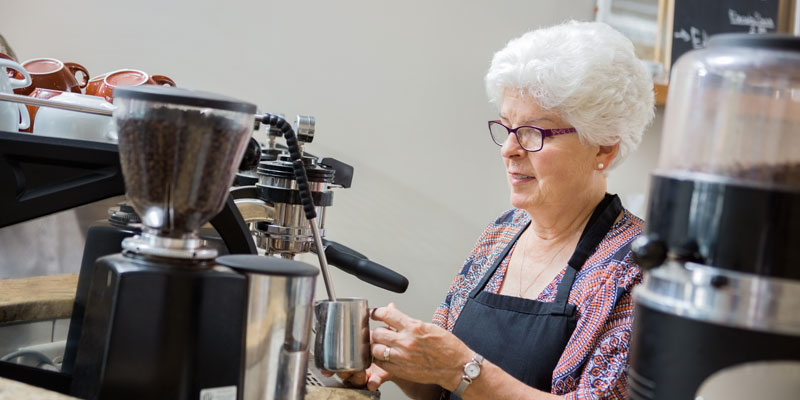Gemma Tetlow is Programme Director of work on pensions and public finances at the Institute for Fiscal Studies (IFS). The IFS aims to promote effective economic and social policies by better understanding how policies affect individuals, families, businesses and the government’s finances. As well as analysing the government’s fiscal performance, Gemma’s research includes examining how pensions, savings, asset holding and health interact with later life working.

“…Higher labour force participation of older women is likely to lead to higher earnings for this group. However, other aspects of women’s wider well-being will also be affected – such as the time available for other activities, including caring and leisure, and a potential increase in the number of older women seeking, but unable to find, work…”
Since 2010 the age at which women can start receiving their state pension has been increasing and is planned to reach age 66 by 2020. Early evidence suggests that this has led to a significant increase in the proportion of women in their early 60s who are in work.
This is the combined effect of how both women themselves and employers have reacted – it is hard to know at this stage, but will be important for the long run effect of the policy, exactly how each of these groups reacts.
Increasing female labour force participation
The increase in the pension age for women, coupled with general trends towards improving health among older women, suggests that over the next decade the number of women in their 60s who will be in the labour force will increase significantly. Our work estimates that women in their late 60s will be as likely as men of the same age to in the labour force.
This would be a significant change from what we have seen before and, in part, is the culmination of long run trends towards increasing female labour force participation.
Higher labour force participation of older women – positive and negative consequences
Higher labour force participation of older women is likely to lead to higher earnings for this group. However, other aspects of women’s wider well-being will also be affected – such as the time available for other activities, including caring and leisure, and a potential increase in the number of older women seeking, but unable to find, work.
The overall effect of the trend towards greater labour force participation of older women will depend on all of these factors. For some groups, these changes could be positive, while for others they may be negative.
This text is based on analysis presented in the following two papers:
http://www.ifs.org.uk/publications/6622
http://www.ifs.org.uk/publications/7251
http://www.ifs.org.uk/newsletter





